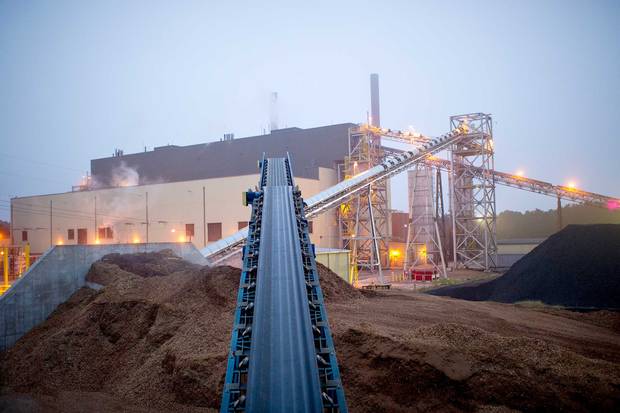Capital Power Corp.
Edmonton
Revenue (2017)
$1.2 billion
Market cap
$2.5 billion
Number of employees
698

Capital Power Corp
Power generation can be dull and predictable—but not in Alberta. The NDP-led province is overhauling its energy market and pushing operators of coal-fired electricity plants to switch to natural gas. Edmonton-based Capital Power Corp. is entangled in this upheaval, but investors have good reason to consider buying its shares: The company is adapting, diversifying and paying a juicy dividend of more than 6% to help offset the uncertainty.
Premier Rachel Notley's government is changing the province's electricity system to a so-called capacity market, which will be more regulated than the free-market structure that prevailed under the Conservatives. When it is fully implemented (the target is 2021), power producers will bid on contracts to provide power at relatively stable prices, replacing a system that paid producers volatile spot prices for electricity. (It was blamed for low levels of investment in new energy infrastructure.)
One major goal of the policy is to accelerate the shift away from coal. The dirty fuel is cheap, and it generated more than half of Alberta's power in 2015. But the idea is to replace coal with renewables and natural gas by 2030. This puts Capital Power in a difficult position: It not only burns coal in most of its power plants but also mines the stuff.
"I'm often asked: 'Are you hoping for a change in government in Alberta?'" said Brian Vaasjo, Capital Power's CEO, said in a recent interview. But, he added, if the clean-energy policy is implemented properly, it's best to go with it, rather than try to reverse it. That would bring more uncertainty, which "becomes more of a problem than the changes themselves," he said.
Clearly, Capital Power (TSX: CPX) needs to change, and it's doing just that. Under Vaasjo, the company has moved beyond its coal-fired Alberta base, snapping up natural gas facilities in Ontario and waste-heat assets in British Columbia. It has also expanded into the United States, acquiring natural gas power plants and building its first wind farm, in Kansas. Today, Alberta accounts for 53% of Capital Power's 4,500 megawatts of owned capacity, down from 74% in 2016. American capacity has grown to a 26% share from 6%.
As for the company's four coal-fired plants in Alberta, it is converting them all to natural gas with $52 million a year in financial aid from the provincial government for 14 years.
Investors appear to be warming to these monumental shifts. Capital Power's share price plunged in 2015 because of uncertainty in Alberta, but it has rallied by more than 60% since then. Some uncertainty persists, however. The new capacity market will not be fully defined until 2018, and electricity prices remain depressed. But the company is paying investors a hefty dividend: After releasing its second-quarter results in July, Capital Power raised the payout by 12¢ to $1.67 per share, supported by cash flows from accretive acquisitions.
"With an above-average yield, we continue to see Capital Power's shares as appropriate for investors looking to be 'paid to wait' over the next couple of years until clarity on the design for the Alberta capacity market is provided," wrote Robert Kwan, an RBC Dominion Securities analyst, in a recent research note.
David Quezada, an analyst at Raymond James, says the stock is undervalued relative to its peers, which could change if investors start to recognize Capital Power's commitment to profit-generating deals. "We remain constructive on CPX's continued focus on growth and believe the market is yet to reward the company for recent M&A-related expansion," Quezeda says. "As CPX continues to grow and diversify, we expect the stock will also benefit from an expanded trading multiple."
Vaasjo, however, recognizes that big changes in the power generation market bring challenges. "There is a tremendous amount of uncertainty out there," he says. But he adds: "If we end up with a good capacity market, our shareholders will do just fine."
Plus, our overhyped stock of the month: Ballard Power Systems (TSX: BLD)
Vancouver-based Ballard went public in 1993 and frequently dazzled investors with a demonstration: driving a bus powered by the company's prototype hydrogen fuel cells a short distance, and then inviting guests to drink the exhaust—water. By 2000, Ballard's share price had soared to more than $100, and its market capitalization climbed past $7 billion.
But the hydrogen revolution never came, and neither did huge sales to transit systems and automakers. Ballard's stock crashed in 2001, and for most of the past decade, it's bumped along near $2 a share.
Yet many investors are pumped once again. Ballard's share price climbed early this year, fuelled by new orders from foreign transit systems. It then shot up past $6 in September, after Ballard announced that it had developed a proton exchange membrane with Japan's Nisshinbo Group that uses hardly any costly platinum.
The handful of analysts who track Ballard remain cautious, however, split between buy and hold. The company's revenues are still small—just $85 million last year—it has only earned a profit once in the past decade (in 2008), and it is forecasting another loss next year. If you've made money on the stock, maybe you should take some profits.